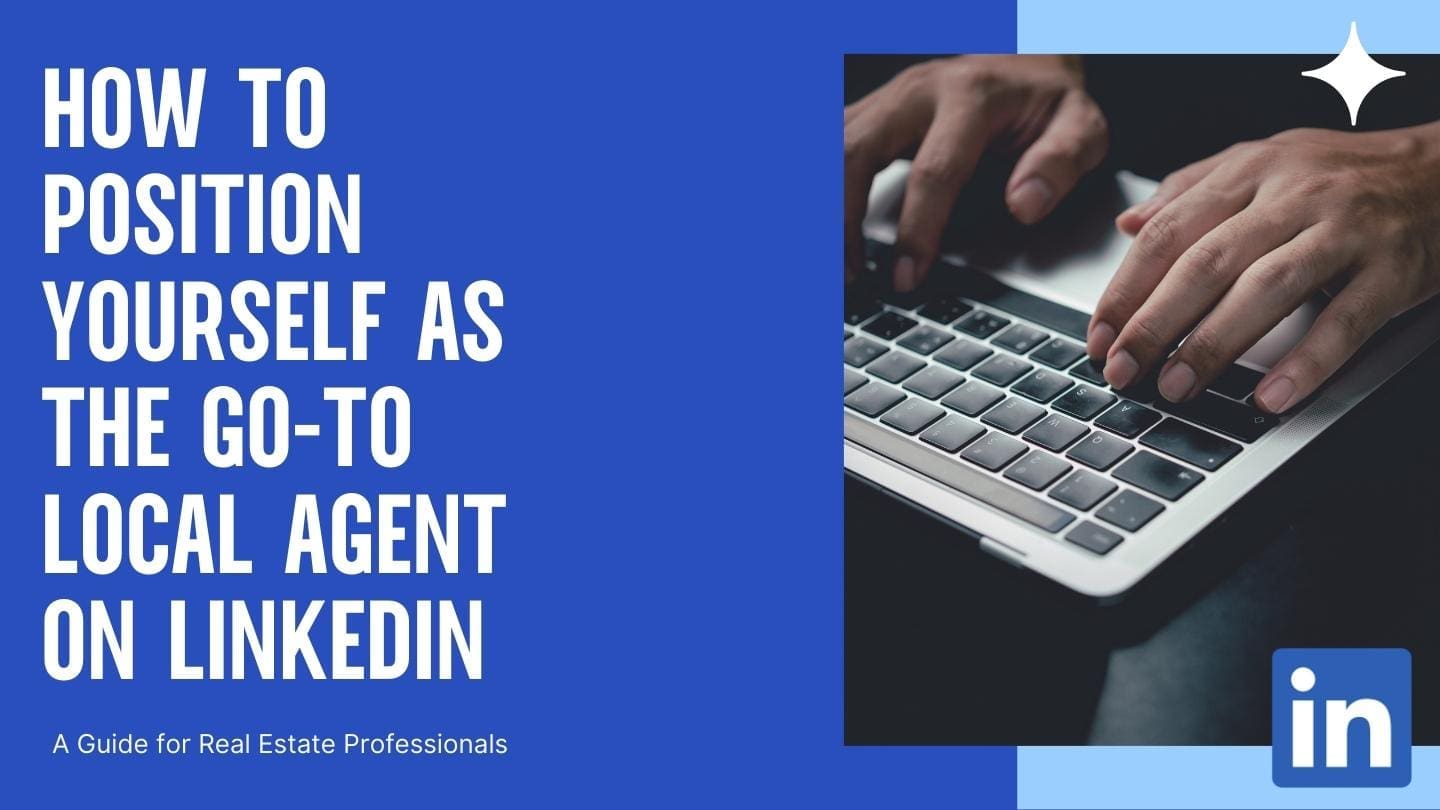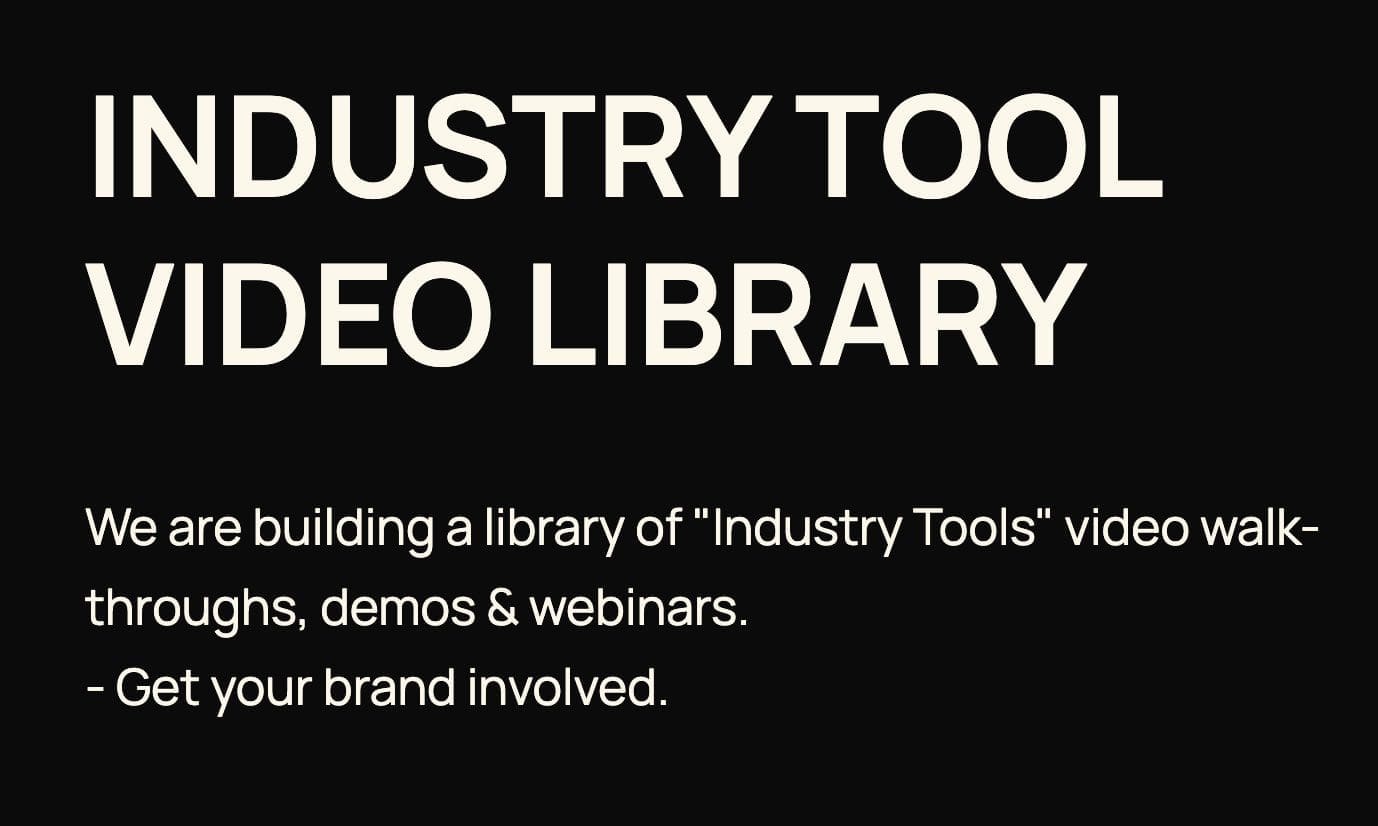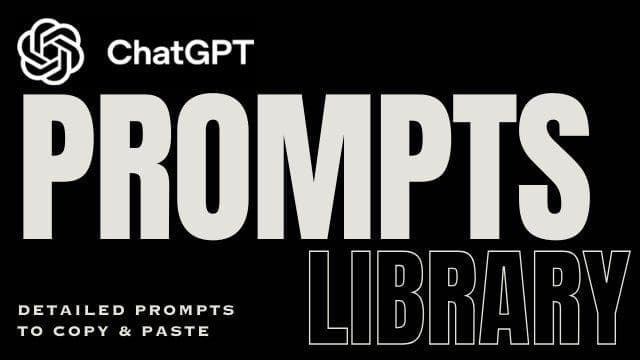AI Learning Centres:
- AI – Learn The Basics
- Get The Most From ChatGPT
- Branding in The Age of AI
- AI for Client Experience
- AI For Prospecting
- AI For Marketing
- AI For Listings & Ads
- Team Adoption of AI
- AI For PM
- AIO & Generative Search
- AI For Operations & Efficiency
- AI For Market Research & Analysis
- AI Ethics, Privacy & Compliance in Real Estate
Digital Marketing & Social Media Learning Centres:
Guides & Downloads

How to Position Yourself as the Go-To Local Agent on LinkedIn
How to Position Yourself as the Go-To Local Agent on LinkedIn
In today’s real estate world, it is not enough to simply have a LinkedIn profile. If you want to stand out and attract the best buyers, sellers, and referral partners, you must become the go-to local agent in your area. LinkedIn is more than just a digital resume. It is a powerful networking and branding platform that, when used correctly, can showcase your local knowledge, build trust, and position you as the agent people think of first when they need property advice.
This guide will walk you through step by step how to build your profile, share valuable content, and create a professional reputation that shines on LinkedIn.
Why LinkedIn Matters for Local Real Estate
LinkedIn is often overlooked by agents who focus on Facebook or Instagram. Yet it is one of the strongest platforms for establishing authority. Unlike other social media channels, LinkedIn is designed for professionals. People expect useful insights, industry knowledge, and connections with experts.
When you use LinkedIn strategically, you:
Show potential sellers that you are serious and professional.
Demonstrate your expertise in your suburb or region.
Build a network of referral partners including mortgage brokers, accountants, and conveyancers.
Reach buyers and investors who prefer credible, business-like communication.
Stand apart from agents who only post property photos.
The aim is to shift LinkedIn from being “just another profile” into your digital home base for professional authority.
Step 1: Optimise Your Profile for Local Authority
Your profile is the first impression people get when they click on your name. It must tell them immediately that you are the trusted agent for your area.
Key areas to focus on:
Headline
Use more than just your job title.
Example: “Helping families buy and sell in [Suburb Name] | Local Market Expert | Trusted Real Estate Advisor.”
Banner Image
Add a photo that showcases your suburb or a landmark.
This immediately signals your local connection.
About Section
Write a clear, friendly description.
Explain who you help, what areas you specialise in, and what makes your approach different.
Example: “For over 10 years I’ve helped homeowners in [Suburb] move with confidence. My focus is clear advice, modern marketing, and a results-driven approach tailored to our local market.”
Featured Section
Showcase local market reports, recent sold properties, or short videos where you discuss suburb updates.
Recommendations
Ask past clients to write testimonials on your LinkedIn profile.
Social proof builds trust faster than anything you can say about yourself.
Step 2: Share Content That Highlights Local Knowledge
The fastest way to be seen as the go-to agent is to consistently post valuable, local-focused content. Every post should either educate, inspire, or inform.
Ideas for content:
Market Updates
Share monthly or quarterly reports about what is happening in your suburb. Use simple language and charts if possible.Neighbourhood Guides
Create posts about local schools, cafes, or parks. This positions you as a community expert.Property Tips
Share short advice pieces such as “3 things to check before listing your home this spring.”Video Insights
Post short videos (1–3 minutes) of yourself explaining local trends or answering common questions.Client Success Stories
Share stories about families you have helped, highlighting the journey rather than just the sale price.Behind-the-Scenes
Show what goes into preparing a property for sale. This builds trust and transparency.
Remember: the aim is not just to post about listings but to become a local storyteller who people turn to for guidance.
Step 3: Engage with Your Network
Posting content is only half of the process. To truly stand out, you need to actively engage. LinkedIn rewards connection and conversation.
How to engage effectively:
Comment thoughtfully on posts from people in your area or industry.
Like and share local business updates.
Congratulate people on milestones such as work anniversaries.
Reply quickly to comments on your own posts.
Tag local businesses, community leaders, or partners when relevant.
Every small interaction shows that you are active and approachable. Over time, your name will stay top of mind with your network.
Step 4: Build Quality Connections
LinkedIn is about building a network of people who may one day become clients or referral partners.
Who to connect with:
Local homeowners and community members.
Mortgage brokers, financial planners, and conveyancers.
Developers and investors.
Local business owners.
Other agents outside your direct area (for referrals).
When sending a connection request, always include a personal note. Example: “Hi Sarah, I noticed you live in [Suburb]. As a local real estate agent, I share regular updates about our property market. I’d love to connect.”
This approach makes your connection requests genuine and valuable.
Step 5: Use LinkedIn Articles for Deeper Authority
Posting short updates is important, but long-form LinkedIn Articles allow you to showcase in-depth expertise. These can act as mini blog posts that live permanently on your profile.
Suggested topics:
“The Complete Guide to Selling Your Home in [Suburb]”
“Why Families are Choosing [Suburb] for Their Next Move”
“The Top 5 Property Mistakes Homeowners Make Before Selling”
Articles are indexed by search engines, which means your insights can appear when people search for property information in your area.
Step 6: Leverage LinkedIn Video and Live Sessions
Video is one of the most engaging forms of content. On LinkedIn, it helps people feel like they know you personally.
Record short videos explaining weekly market activity.
Create buyer or seller tip videos filmed in local streets or parks.
Host live Q&A sessions to answer questions about your suburb’s property market.
Seeing your face and hearing your voice builds familiarity and trust.
Step 7: Position Yourself with Consistency
The agents who become go-to experts are those who show up consistently. Sporadic posting or once-off efforts will not build authority.
Build a routine:
Post at least three times per week.
Engage with your network daily (5–10 minutes).
Publish one LinkedIn article per month.
Review your profile every quarter to keep it fresh.
Consistency is what shifts you from being “just another agent” to being “the agent everyone knows.”
Step 8: Showcase Results Without Bragging
You want to demonstrate success without sounding arrogant. The best way is to focus on the client’s story, not just the numbers.
For example:
Instead of “Just sold for $1.2m,” try “We helped Sarah and David sell their family home in [Street] within three weeks. They are now excited to move closer to their grandchildren.”
This makes the post relatable and human.
Step 9: Encourage Referrals and Introductions
LinkedIn is not only about direct buyers and sellers. Many of your best opportunities will come from referrals.
Ask your connections to introduce you to anyone considering buying or selling locally.
Offer to share your suburb market update PDF in return.
Acknowledge and thank anyone who refers you publicly on LinkedIn.
This reinforces that you are the agent people trust to recommend.
Step 10: Measure and Refine Your Efforts
LinkedIn provides analytics on your posts and profile. Review these regularly.
Which posts get the most engagement?
Who is viewing your profile?
Are local homeowners connecting with you?
Adjust your approach based on what works. Over time, you will sharpen your strategy and grow your influence.
Bringing It All Together
Positioning yourself as the go-to local agent on LinkedIn is not about quick wins. It is about building a professional presence that shows your expertise, community knowledge, and genuine care for clients.
When you:
Optimise your profile,
Share valuable local content,
Engage meaningfully with your network, and
Show up consistently,
You become the agent people think of first when they need help in your suburb.
LinkedIn rewards authenticity, helpfulness, and professionalism. If you commit to the process, you will not only attract more clients but also build a respected brand that stands the test of time.






